Introduction
I’ve spent a lifetime building things in deserts. At NASA’s Jet Propulsion Laboratory, I worked on missions that reached for the stars. At Burning Man, I helped bring telescopes, art cars, and impossible dreams to life on the playa. For me, the desert has never been empty… it has always been both canvas and teacher.
Now, in retirement, I find myself returning to that same dust, but in a different way. This time, it isn’t Black Rock City that calls to me, but the rusted, post-apocalyptic world of Wasteland Weekend. And it isn’t just the old lessons I’m carrying with me, but something new: a character named Luthen Dune, a reliquary dealer of meaning in a world that pretends meaning is gone.
This is the story of how he came to be. How a phone call from Susan, a community’s generosity, and a new friend named Michael turned an old Cushman cart into the Annex Cart—a rolling gallery for relics, memories, and my own rediscovered art. It is a story of Burning Man roots and Wasteland rebirth. Of finding again what I thought I had left behind.
Over the pages that follow, I’ll share my history with the desert, the projects that defined me, the burnout that pushed me to seek a new canvas, and the quiet joy of creating again in retirement. I’ll take you into the countdown before my first Wasteland Weekend, when Amazon deliveries fill my yard like incoming flight hardware, and I work against the clock to bring Luthen Dune to life.
It is a story about survival, but not just survival. It is about art as survival, and survival as art. And, ultimately, it is about how the desert still finds ways to remind me who I am.
1. A Life in the Desert
I was twelve years old when my father, a man who belonged to the desert, took me by the hand and walked me into the wide silence. He stopped, looked out across the horizon, and asked me, “What do you see?”
“Nothing,” I answered, impatient in the way a boy might be when faced with an empty expanse of sand and sky.
“Look again,” he said, and then he gave me the kind of truth that changes the way a person sees forever. “Do you realize you are the tallest living thing standing for fifty miles in any direction? We tower above the desert, but it is so big, we are small at the same time.”
That paradox rooted itself deep in me. From that day forward, the desert became my cathedral, my classroom, and my stage. It taught me humility in its vastness, and it taught me reverence for small acts of creation that could live within it. Later, when I looked up at the stars and found my life’s work among the mysteries of space, I realized it was the same lesson: we are insignificant in size, yet the meaning we carve out matters all the more.
Years later, when I arrived at my first Burning Man in 2011, I carried that lesson with me. I had already been part of the community and helped build the Charlie the Unicorn Art Car with Ken Feldman, but this was my first Burn. The desert welcomed me again, this time dressed in fire and LEDs. I knew from the start that I would not just witness, but create.
So I built my own art car. The Choo Choo Shoe. I bought an old gas-powered Cushman Cart, stripped it down, framed it out, and stretched fabric to form the outline of a giant shoe. It rumbled across the playa with laughter and absurdity, though I learned a hard truth along the way: never again fabric. Wood, yes. Metal, yes. Fabric nearly defeated me.
Among my many desert creations, the Mars Rover Art Car holds a special place. It was built as both homage and joy, a rolling tribute to the machines I had helped send across another world during my years at JPL. Built to resemble the iconic rover, it wasn’t just a vehicle—it was a story on wheels. On the playa, it symbolized exploration and resilience, reminding everyone who climbed aboard or stood in its shadow that the same human curiosity that pushed rovers to Mars was alive in the dust of Nevada. It was a celebration of absurd engineering and serious reverence at the same time, a desert myth given shape and headlights.
From that rover grew an identity: the Desert Wizards of Mars. We were a band of makers and dreamers who treated the playa like our laboratory. The name was tongue-in-cheek, but it fit—we conjured science from the sand, blending humor, engineering, and cosmic awe into something uniquely ours. The Wizards weren’t just about machines, they were about meaning. The Mars Rover Art Car became our familiar, our flag, our shared symbol of exploration. It stood at the crossroads of my two lives: the professional world of space science and the wild experiment of Burning Man. In its wheels and welded frame, I found the perfect marriage of desert dust and stardust.
But creation is born of mistakes as much as triumphs. Over the years I built, co-built, or supported the birth of art cars and even historic vehicles that rolled across Black Rock City. My proudest work, though, was co-founding the Black Rock Observatory.
There, in the middle of the desert, we brought the stars down to Earth, letting wanderers peer through telescopes at Jupiter’s bands or Saturn’s rings. What began as an idea grew into a nonprofit that still runs today, long after I stepped aside.
The desert has been the throughline in all of it.
The desert is my canvas where I create.
I have organized ten volunteers and I have organized one hundred. I have stood in the dust with crews building structures that should not exist, only to watch them burn. I have built machines that danced across the playa like myths made metal. Every time, the desert reminded me of what my father first taught: it dwarfs us, yet it elevates us when we dare to create within it.
The desert is not empty. It is alive with lessons, waiting for those who will look again.
2. From Burning Man to Wasteland Weekend
Burning Man was where I learned to build my voice in the desert. It was where I took the lesson my father gave me—that vastness can make us small but also grant us meaning—and turned it into art on wheels, wood, steel, and starlight. For more than a decade, Black Rock City was my second home. I helped birth art cars that became legends, stood alongside volunteers who built impossible things, and co-founded the Black Rock Observatory, a cathedral of optics and wonder.
But Burning Man, for all its scale and utopian ambitions, is only one way the desert can be a stage. There is another gathering, born not from the dream of a temporary city but from the myth of survival after the fall. Wasteland Weekend (WW).
Where Burning Man wraps itself in light, WW cloaks itself in ash. Instead of gleaming spires and illuminated temples, you find rust, smoke, and the aesthetic of collapse. It is a world where Mad Max is scripture, and every camp is a tribe fighting for style and survival in equal measure. It does not pretend to be anything other than what it is: a vision of the end of civilization, lived out with a wink, a growl, and a lot of welding.
Yet beneath the dust and the spikes and the roar of engines, I recognized something familiar. The same current of creativity. The same invitation to step into a role larger than yourself. The same demand from the desert to prove that you can create something worth remembering, even if it is temporary, even if it will be torn down or burned or rusted back into the ground.
I respect those who still go to Burning Man—many of my friends still do—but me, I burned out. When I first joined, there were “bitter vets” who warned that the event was already changing, that something ineffable was slipping away. In the 2011–2020 decade I saw it myself: the steady march of fees, rules, fines, and paperwork. The culture of “radical inclusion” sometimes gave way to cliques and barriers. The wild experiment that once thrived in the absence of rules found itself increasingly fenced in. Even as the art grew larger and the city more polished, I felt the weight of bureaucracy pressing against the very freedom that drew me there.
I went to my last Burn… twice. Because it is hard to say goodbye to a city you helped shape, a place where you poured years of sweat and vision into projects that lit the desert sky. But the time came when I knew my chapter there was done. My canvas had grown too small, or perhaps too crowded, and I longed for a new horizon.
That search led me to Wasteland Weekend. A gathering where the rules fall away once more, where art cars do not require forms, approvals, or inspections beyond the ability to keep them moving across the dust. For someone like me, who thrives on building and storytelling in the open desert, that was enough. I was in.
3. Retirement and Reinvention
Retirement is a strange word. For some, it means the end of a career and the beginning of rest. For me, it has meant something else entirely: a reinvention. I spent thirty-seven years at NASA’s Jet Propulsion Laboratory, a place where ideas were hammered into spacecraft and sent across the solar system. When that chapter closed, I found that I could not stop building. I could not stop imagining. Creation is simply part of who I am.
At Burning Man I had worked in teams of ten, twenty, sometimes a hundred. Large crews of volunteers, artists, engineers, and dreamers who brought to life rovers, telescopes, and rolling works of absurdist art. Leading projects like the Black Rock Observatory meant juggling logistics, personalities, and resources on a scale that rivaled small expeditions. The payoff was immense: people lining up in the desert night to glimpse Saturn through a telescope or to ride across the playa on a machine that shouldn’t exist.
But retirement has shifted that scale. I no longer lead armies of builders. I don’t wrangle massive teams to push a project over the finish line. These days, my workshop is quieter, my projects smaller in footprint, but perhaps more personal in meaning. I work more solo, or with just a handful of collaborators. What I create now doesn’t have to serve a thousand people—it has to serve my curiosity, my artistry, and the story I want to tell.
That is how the Annex Cart was born. Unlike the Mars Rover Art Car or the towering infrastructure of Burning Man, this project is modest in size but rich in intention. Built from my own two hands in retirement, it reflects not only the skills I’ve honed over decades of making, but also the shift in how I approach creation. It is not about scale anymore—it is about expression.
The Annex Cart is not a machine of spectacle; it is a vessel of story. It carries relics, frames, and artworks that speak to my new character, Luthen Dune. It is part gallery, part reliquary, part wandering stage. Where once I might have needed a crew of fifty to bring something to life, now I can roll out with my own cart, a few framed works, and step fully into character.
In some ways, retirement has returned me to the essence of what drew me to the desert in the first place: the ability to stand in a vast expanse, to be both small and tall at the same time, and to let the art itself be the bridge between those two truths.
4. The Birth of Luthen Dune
Every persona I’ve ever brought to life in the desert has been an extension of myself. The Choo Choo Shoe was whimsy. The Mars Rover was reverence for exploration. The Black Rock Observatory was a bridge between Earth and the cosmos. Each carried a part of me, yet none of them reflected me so directly as this new creation: Luthen Dune.
The name itself carries the weight of my inspirations. Luthen from Luthen Rael, the character in Andor, who stood as a sort of Knowledge Worker, an art dealer, a guardian of relics whose true currency was meaning. Dune from Frank Herbert’s epic, where the desert is not merely backdrop but destiny, and where the Fremen embody “desert power.” As someone who has lived much of his life in deserts—both of Earth and of imagination; I see myself in that lineage, a blue-eyed wanderer who finds strength in dust and emptiness.
Thus Luthen Dune is no invention out of whole cloth. He is a reflection of who I already am. He is an art dealer in a world that has forgotten the value of beauty. A reliquary keeper who walks through ash and rust carrying not food or bullets, but fragments of memory. He is the answer to a question I have asked my whole life: what survives when all else is stripped away?
And in this creation there is also a balance. For years I have carried another mantle: the Space Pope. A voice of compassion, reason, and truth in the digital cosmos of Eve Online. That role still lives within me, but even Popes may rest. In the dust of the Mojave, another part of me rises: Luthen Dune, the curator of meaning in a world of ruin.
In truth, Luthen is my own desert mask, but it is a mask that reveals rather than hides. Through him I can tell stories that matter, offer relics that whisper of hope, and embody the conviction that survival alone is not enough. The desert has always been my teacher, and now, through Luthen Dune, I can become one of its voices.
5. Community and Collaboration
For all my years of creating, one truth has always remained: art is never built in isolation. Even when a project bears the fingerprints of one pair of hands, it carries the echoes of many others. The desert demands community, and community answers in surprising ways.
That was true even before the Annex Cart existed. I was visiting a friend in Pismo Beach when my wife Susan called me. She had spotted an online ad for an electric Cushman cart; simple, sturdy, and full of potential. The Mars Rover, long gone, could never be replaced, but here was a candidate worthy of a second life. The price was a steal. I told her to call the seller, leave a callback number, and see what happened.
The seller, Chris, did call back. But it wasn’t me who closed the deal. It was Susan. By the time I returned home, the cart was sitting in the driveway, waiting for me like a spacecraft on the pad. Susan had seen in me something I wasn’t ready to admit: that I still had the fire for a new project. She was excited to watch me working again, to see the passion return that once burned so brightly during the Burning Man years. The Annex Cart was not only my next canvas—it was also a gift of faith from her.
From there, the circle widened.
When I began shaping the world of Luthen Dune, I knew I would need relics to fill his cart. A reliquary dealer cannot wander the wastes empty-handed. So I turned to my own city, posting on Facebook and calling out to friends and neighbors: would anyone donate old paintings or artwork to the project? Something that could be framed, carried, and transformed into pieces of Luthen’s collection?
The response came quickly. A few kind souls stepped forward, gifting me works that had once lived on their walls but now found new purpose in the Annex Cart. Each piece became more than just a painting—it became a story, a fragment of my community carried into the desert.
And then there was Michael. He went further than I could have imagined. Rather than simply donating, he opened a door I hadn’t considered. He invited me to create my own digital artworks, surreal visions of the apocalypse and fragments of meaning in the wasteland. He offered not only to print them at high quality on 12"x18" stock, but to cut them clean and ready for framing. Suddenly, I wasn’t only carrying the art of others… I was making and carrying my own.
This was a turning point. For years I had built rovers, observatories, and mutant vehicles. Now, for the first time, I was stepping into visual art with my own voice. To see those works framed, tangible, and ready to roll into the dust was something profound. They were no longer just pixels on a screen. They had become relics, artifacts in the world of Luthen Dune.
What began with Susan’s phone call and Chris’s cart became something much larger: a collaboration between family, friends, and community. What began as a simple call for donations became a collaboration, a blending of community generosity and my own creative leap.
The Annex Cart would now carry not just scavenged relics, but also original works born from my imagination. In that, Luthen Dune gained authenticity. He wasn’t just curating the past—he was shaping a vision of the present, and maybe even the future.
6. Art as Survival, Survival as Art
When the world thinks of survival, it thinks in terms of scarcity: food, water, bullets, fire. These are the necessities that keep the body alive. But I have always believed survival is not enough. Without meaning, survival collapses into existence without direction. The desert taught me that truth early in my life—standing with my father in a sea of nothing, discovering that even “nothing” could be vast and full of lessons.
Art is one of those lessons. It is a strange paradox: useless in the strict economy of survival, yet essential in the deeper economy of living. A painting cannot quench your thirst. A poem cannot shield you from the cold night wind. But when those basic needs are met, it is art that gives people the will to keep going. It offers a reason beyond necessity, a glimpse of what it means to be human in a universe that often does not care whether we survive at all.
This philosophy has guided everything I’ve created in the desert. The Black Rock Observatory wasn’t just about lenses and mirrors—it was about reminding people that we are part of something larger, that the stars we see at night are not random but connected to the same physics that make us who we are. The Mars Rover Art Car wasn’t just a machine; it was a rolling reminder that human beings once dared to send a robot across millions of miles to touch another planet. Each of these projects carried with it the conviction that meaning must travel alongside survival, or else survival is hollow.
Now, as I step into Wasteland Weekend, I bring that same philosophy in a new form. Luthen Dune is not a warlord or a scavenger. He is not a master of engines or weapons. He is a dealer in relics, a curator of memory. He carries framed works of art into a world that pretends art has no value. He tells stories not to command an army but to remind wanderers that they are part of a larger story.
The Annex Cart itself becomes both stage and reliquary. Within its frame are paintings—some gifted, some created by me, some born from the collaboration of new friends like Michael who pushed me to take the leap into my own art. Each piece is a kind of water for the soul. Some depict surreal visions of apocalypse, others fragments of memory from the “before times.” Together, they stand as proof that meaning does not vanish even in collapse.
And perhaps that is why the desert is the perfect backdrop for all of this. The desert strips things down. It takes away excess. It leaves you with what is essential. To carry art into that environment is an act of defiance and reverence at the same time. It is to say: here, in a place where survival is hard enough, we still choose to celebrate meaning.
This is the heart of Luthen Dune. This is the heart of my own journey. That art is not the luxury of survival—it is its purpose. It reminds us that we are not only bodies struggling against the dust, but spirits capable of shaping beauty in the middle of ruin.
7. The Final Countdown
As I write this, I am one month away from rolling into the wastes for the first time. The Annex Cart sits in my driveway like a spacecraft on the launch pad—assembled, recognizable, but not yet complete. The final touches are still underway. New electrical wiring hums on my workbench. Fresh frames for the paintings wait to be mounted. Clothing and details for Luthen Dune himself pile up, waiting for the moment when costume becomes character.
This is the stage of creation I know so well. At NASA, we called it the pre-launch window: the spacecraft is built, but the technicians are still swarming around it, making last-minute changes, tightening bolts, chasing down gremlins in the system. It looks finished to the outside world, but those of us inside know better. It is complete, but not ready. The fuel hasn’t been loaded, the countdown hasn’t yet reached zero, and every day is a race against time.
That’s where I am now. The Annex Cart is my spacecraft. Wasteland Weekend is my launch. Every Amazon delivery feels like another piece of flight hardware arriving at the receiving dock, my front yard turned into a temporary staging ground. The boxes pile up—wires, props, paint, fabric, costume pieces—and I tear them open with the focus of a flight director checking off systems.
It is exhausting. It is exhilarating. It is sacrifice. I’ve given my time, my funds, my focus, and my energy to make this vision real. And unlike the large crews of my past, this mission is largely mine to carry. The clock is ticking. The countdown has begun. And I am, once again, engineering in the blind—trusting that when it all comes together, the Annex Cart will not just function, but fly.
This is the moment between dream and reality, when anticipation mixes with nerves. But if there is one thing the desert has always taught me, it is this: when the dust clears, the vision will stand, and the story will begin.
Stay tuned… I’ll share my updates, and eventual post-mission findings when all this is done, but know this: the desert is not just where I build, it is where I become. When the dust rises at Wasteland Weekend, every relic, every frame, every spark of Luthen Dune will not only be my creation; it will be all… me.
-Charles White AKA Luthen Dune, Space Explorer and Galactic Collector of Arts
Thank you for reading my story, allow me to ask that you hit that like button (the heart) as it is one mouse click for you, but it tells me typing all this was worth it. It keeps me inspired to write and share more. Thanks again. -CW
Bonus Content
A drive-by of Charlie The Unicorn on YouTube…
Link to Wasteland Weekend:
https://www.wastelandweekend.com/


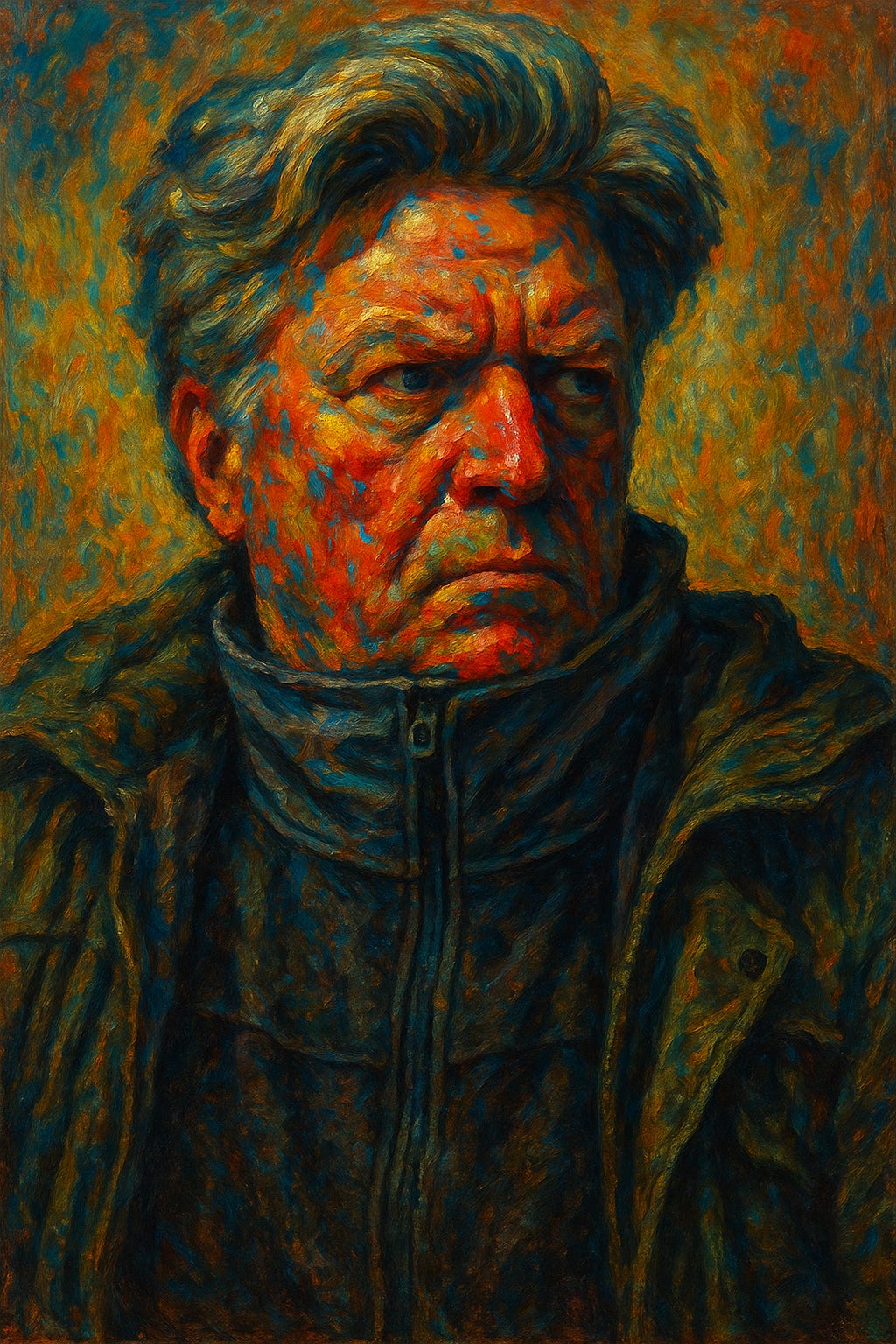
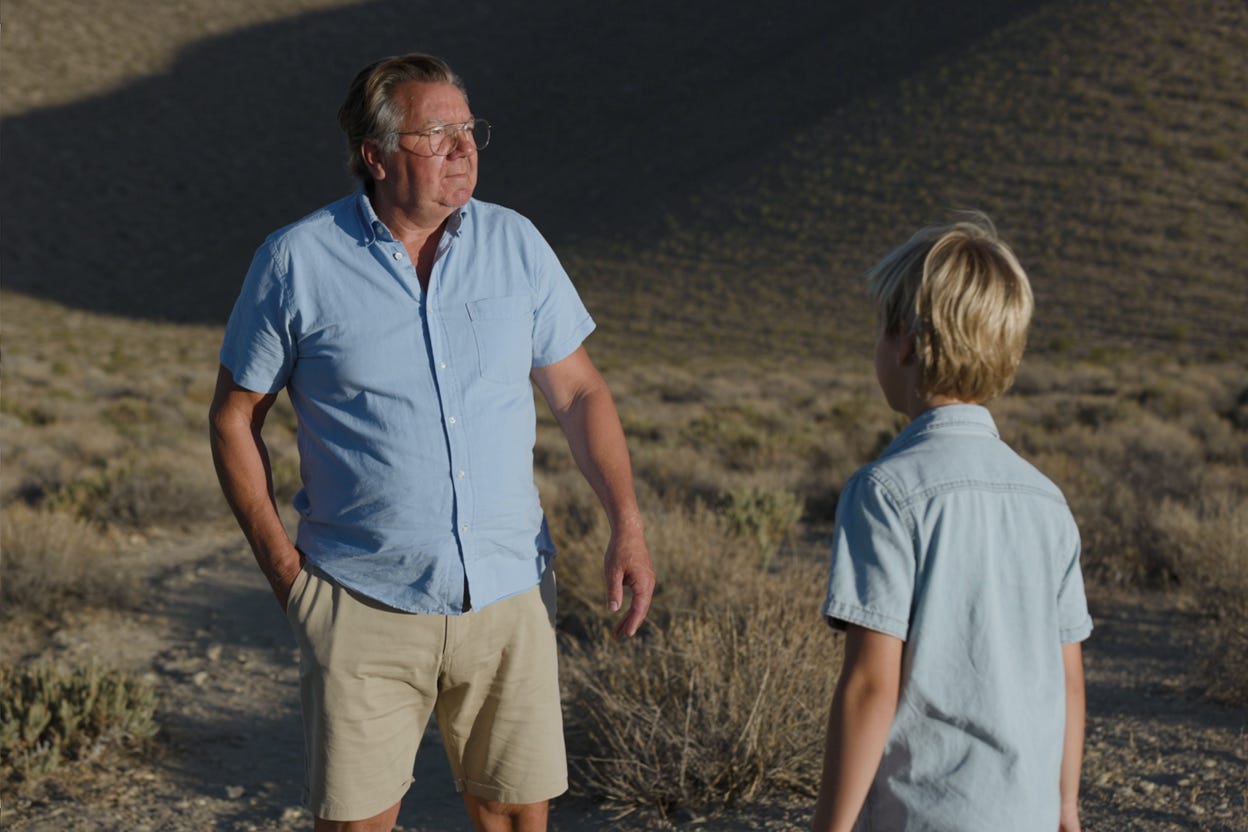
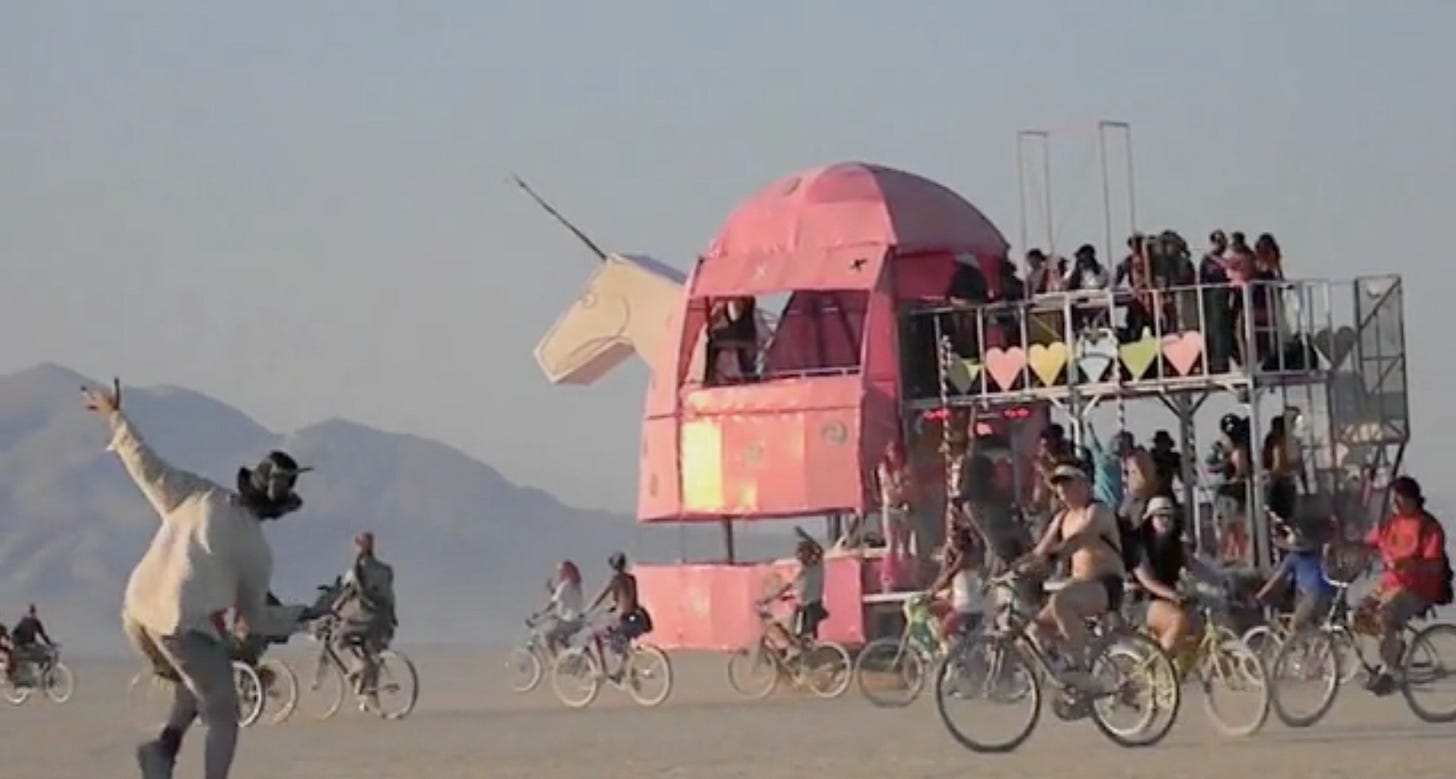
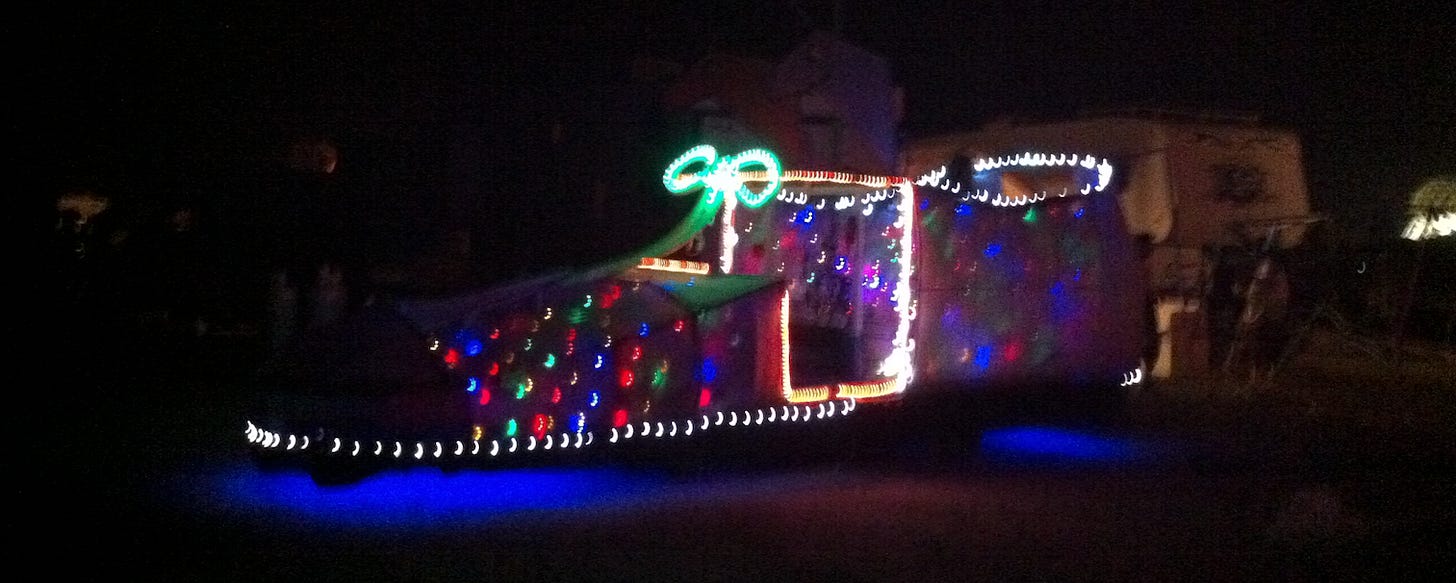
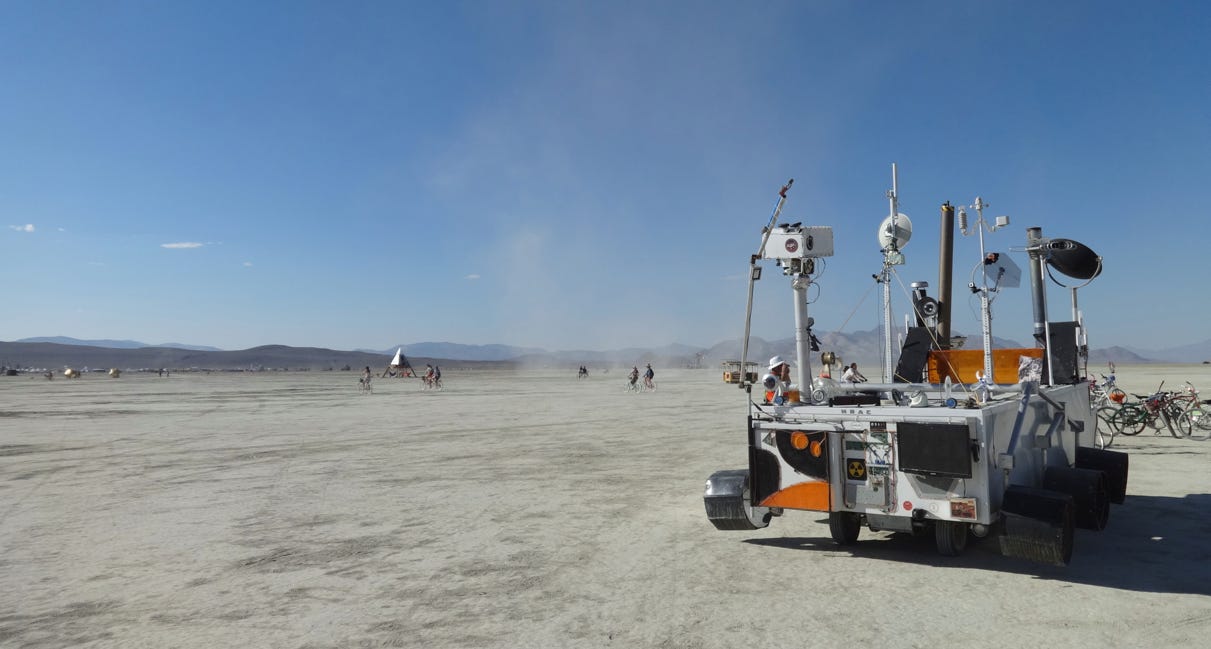
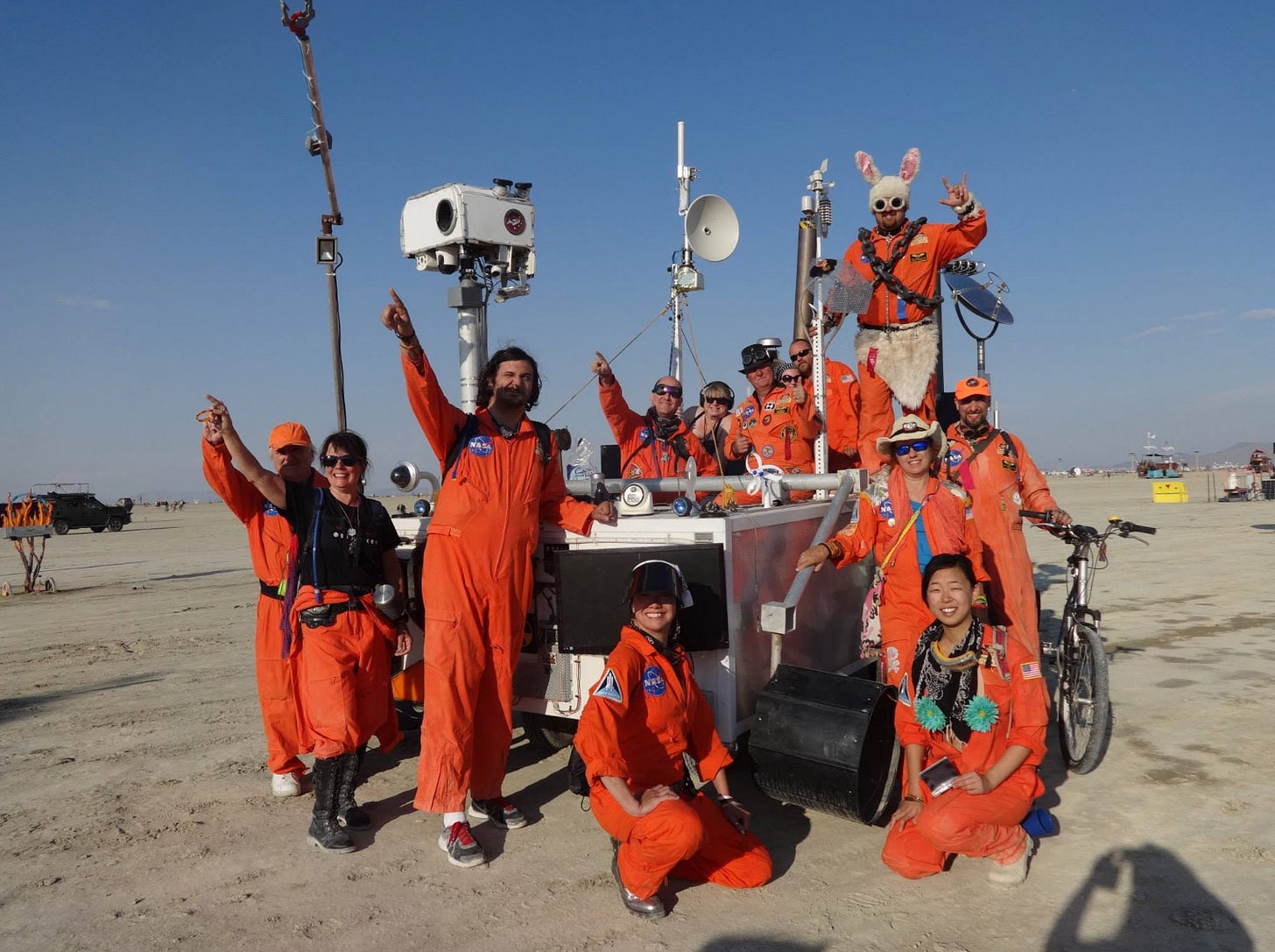
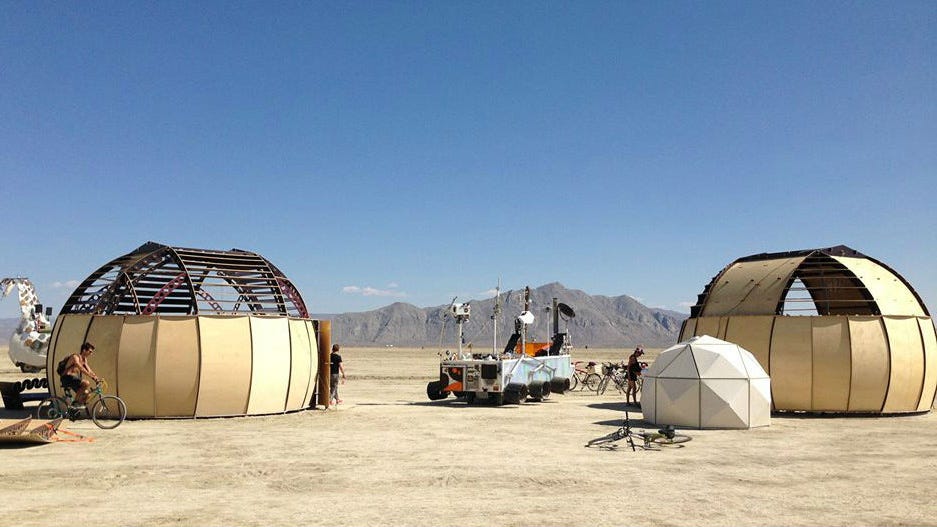
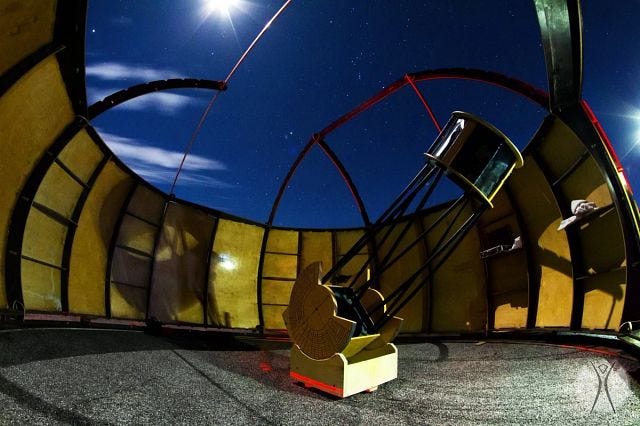
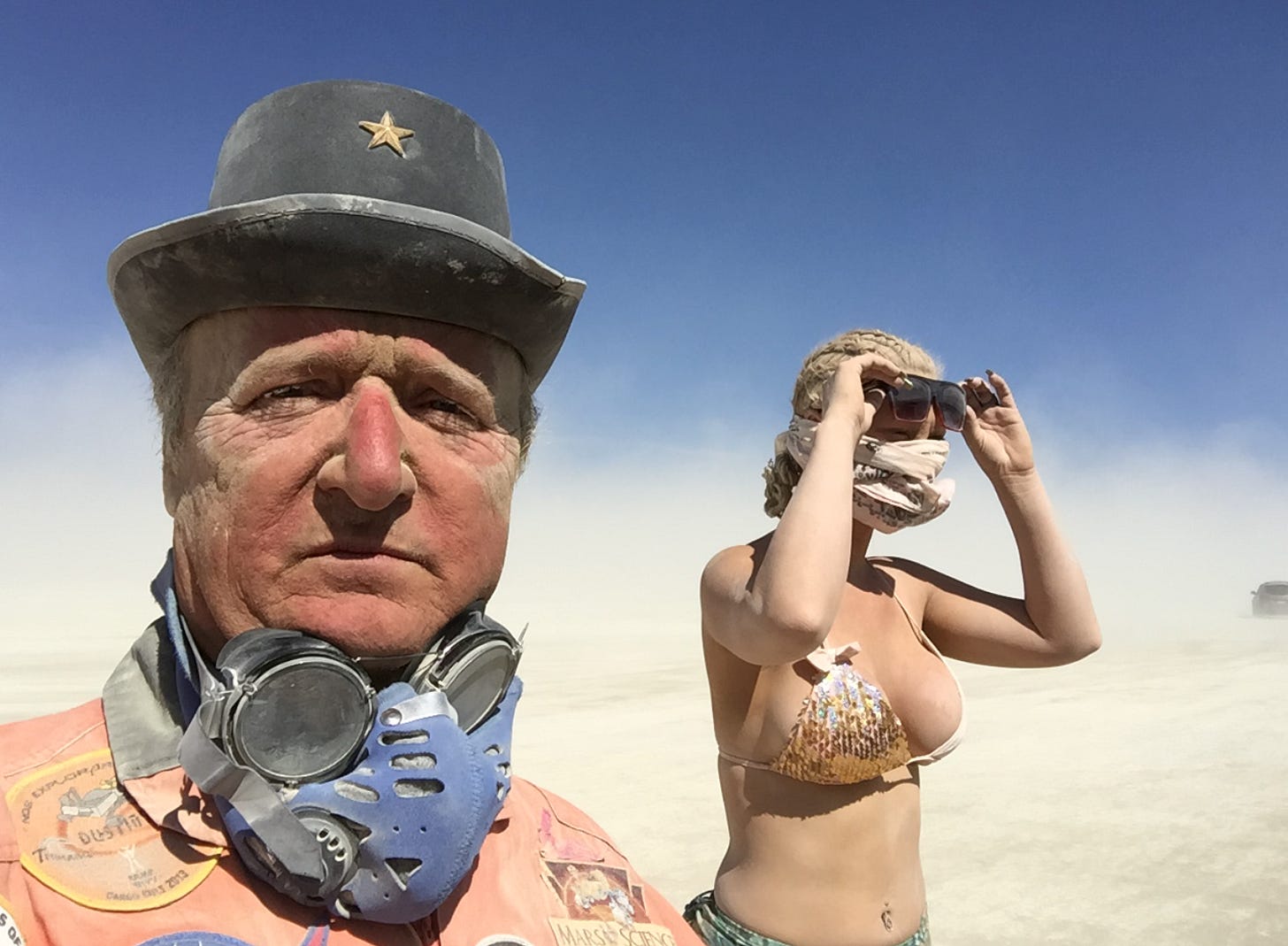
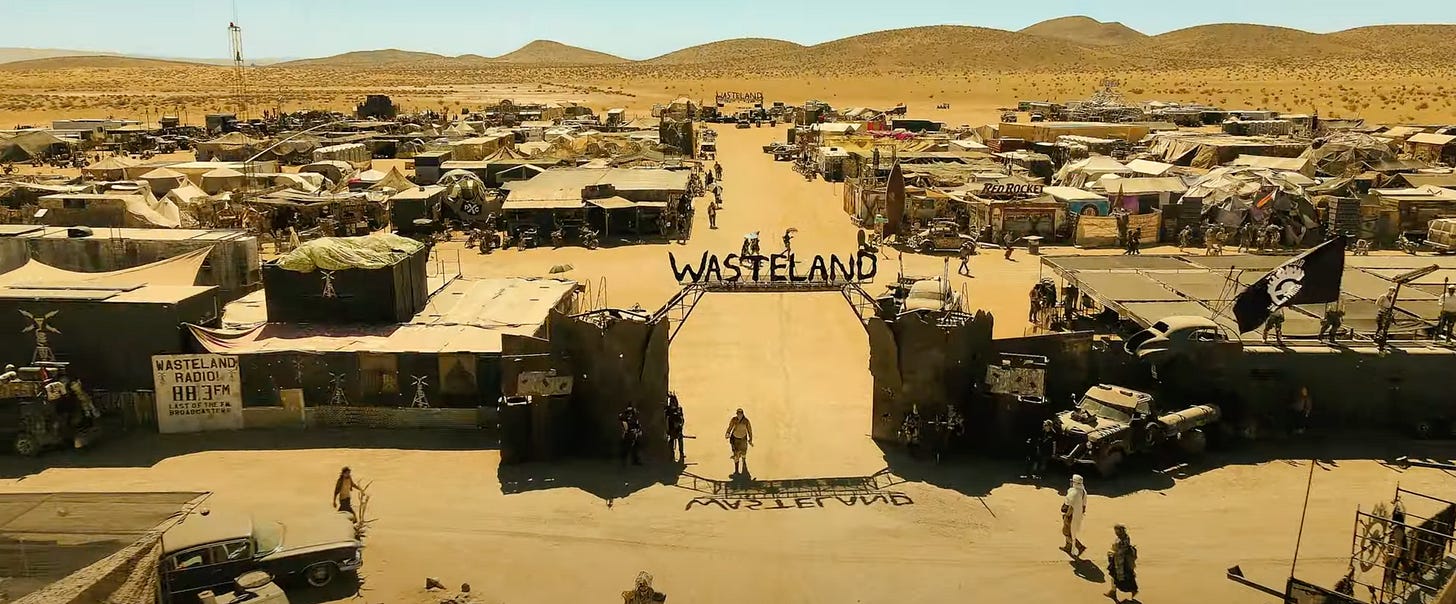
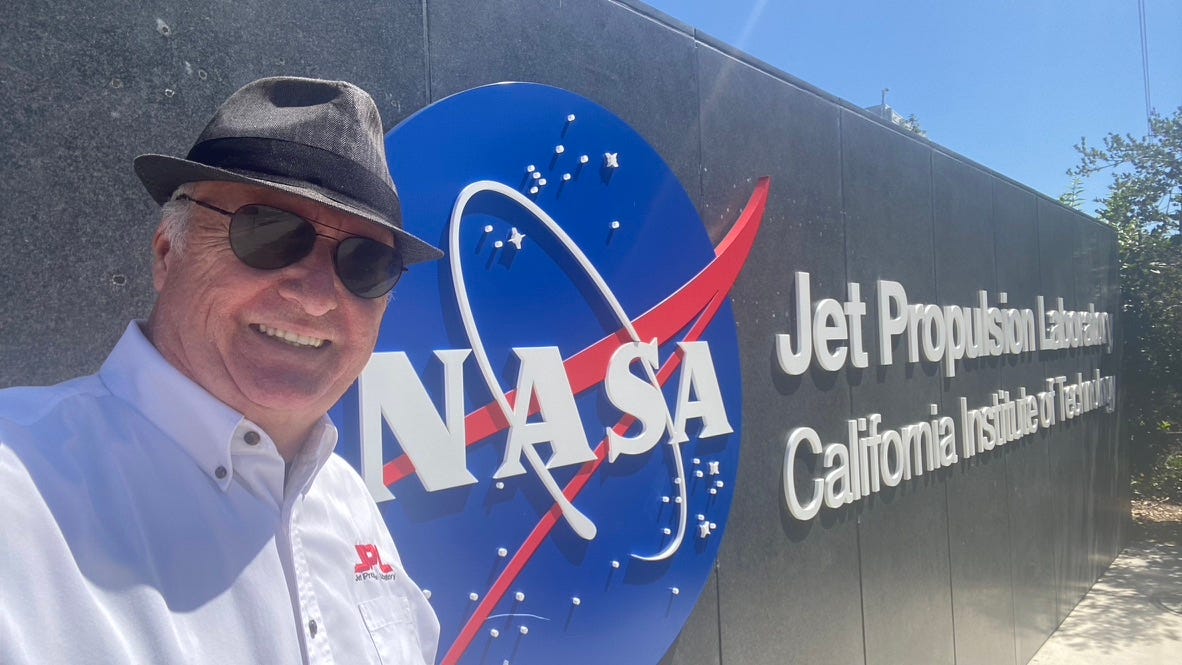
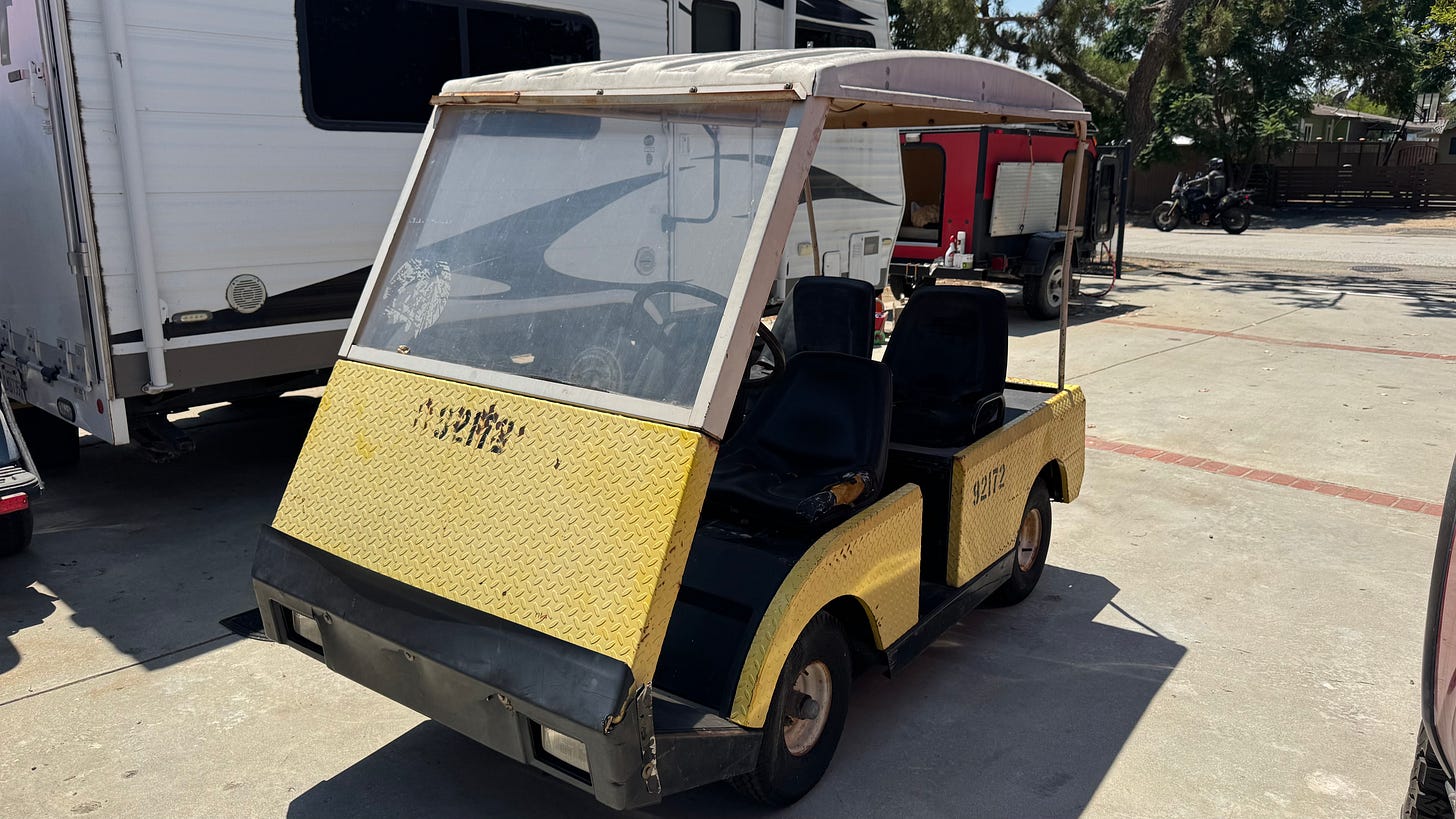
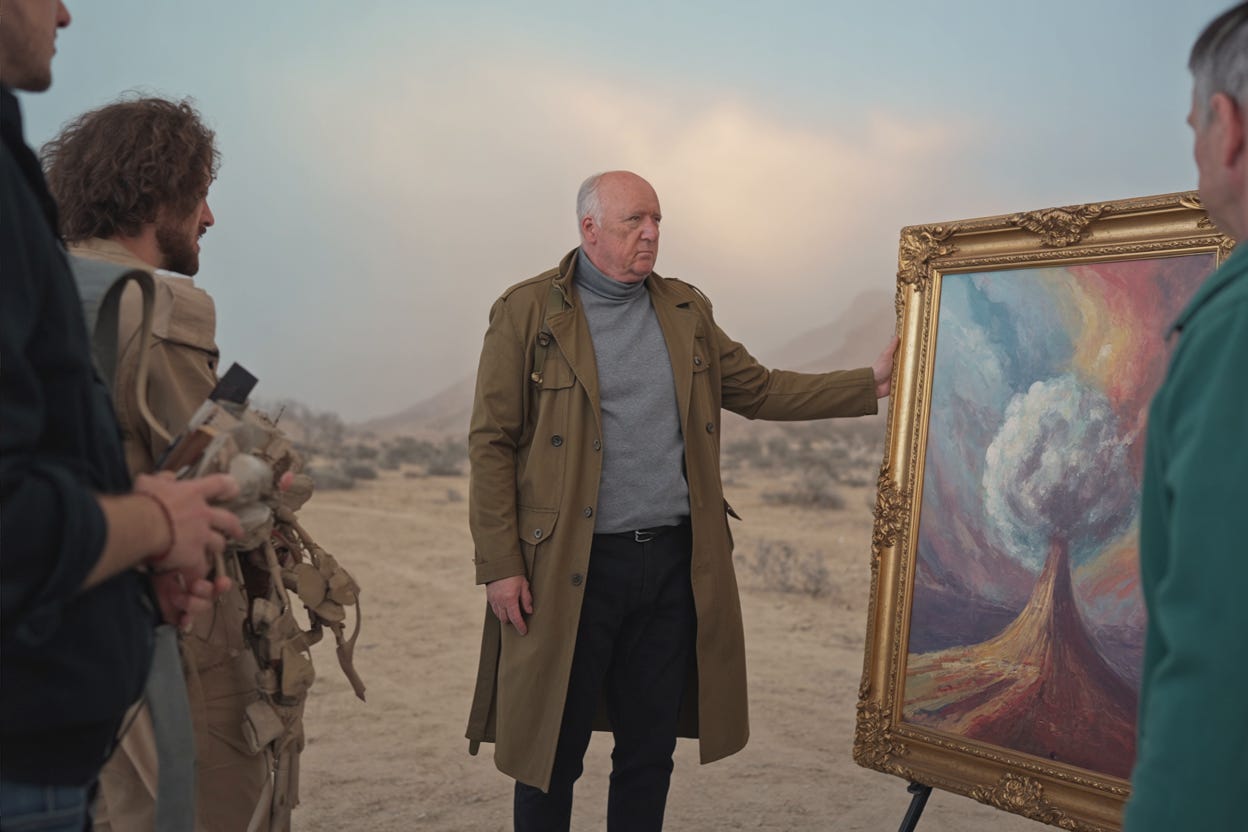
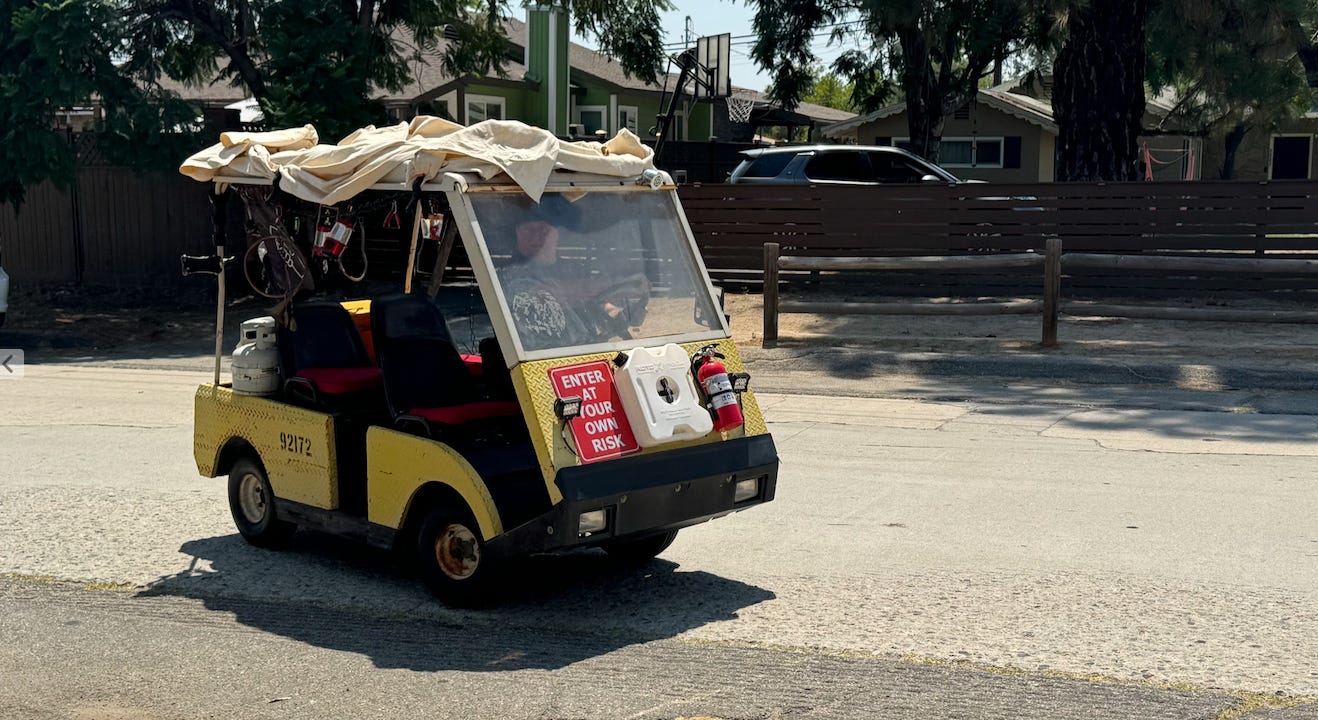
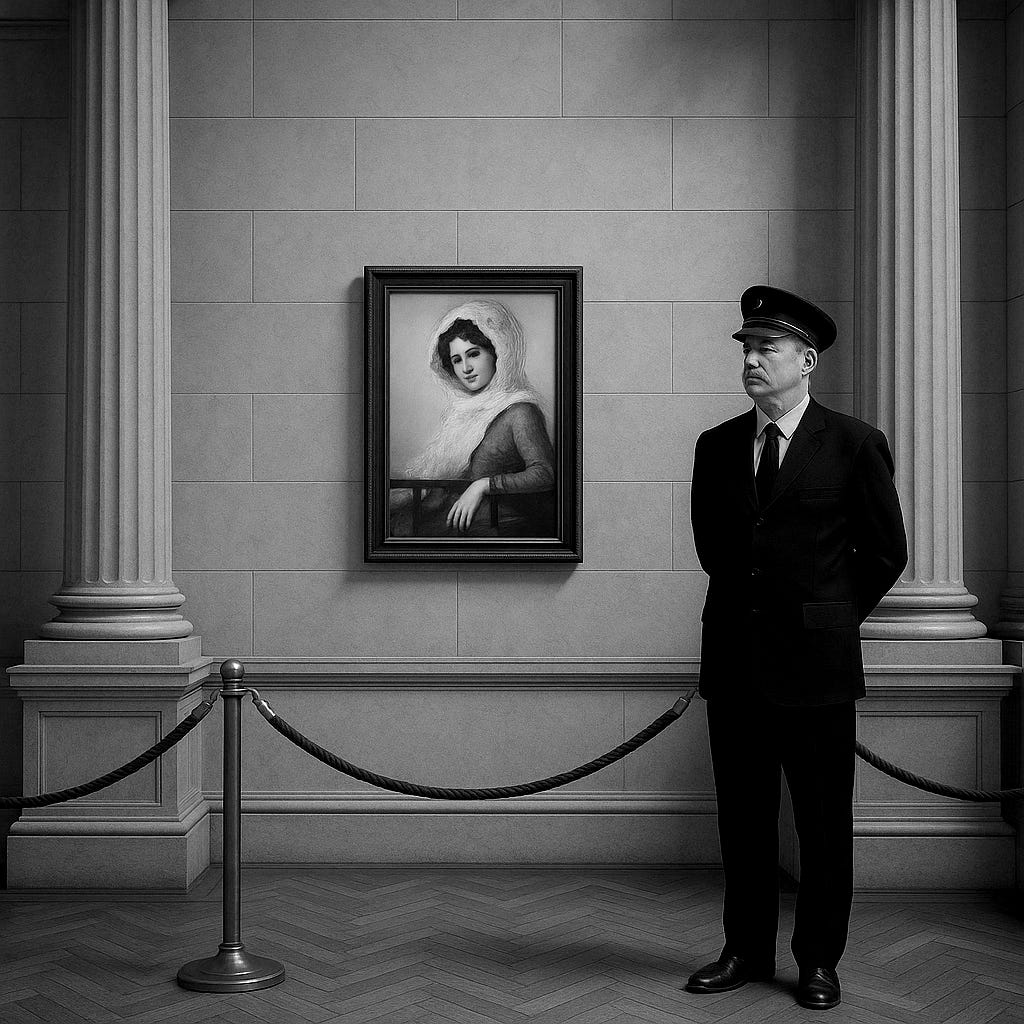
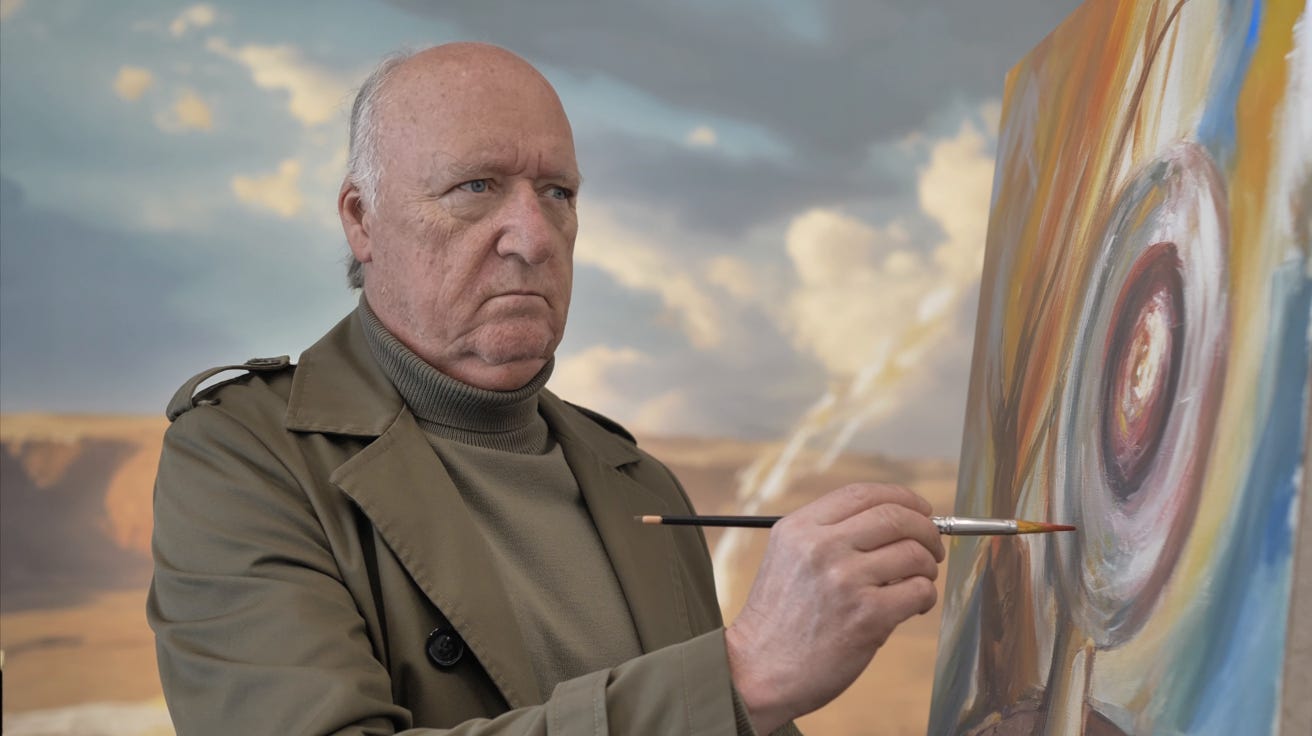
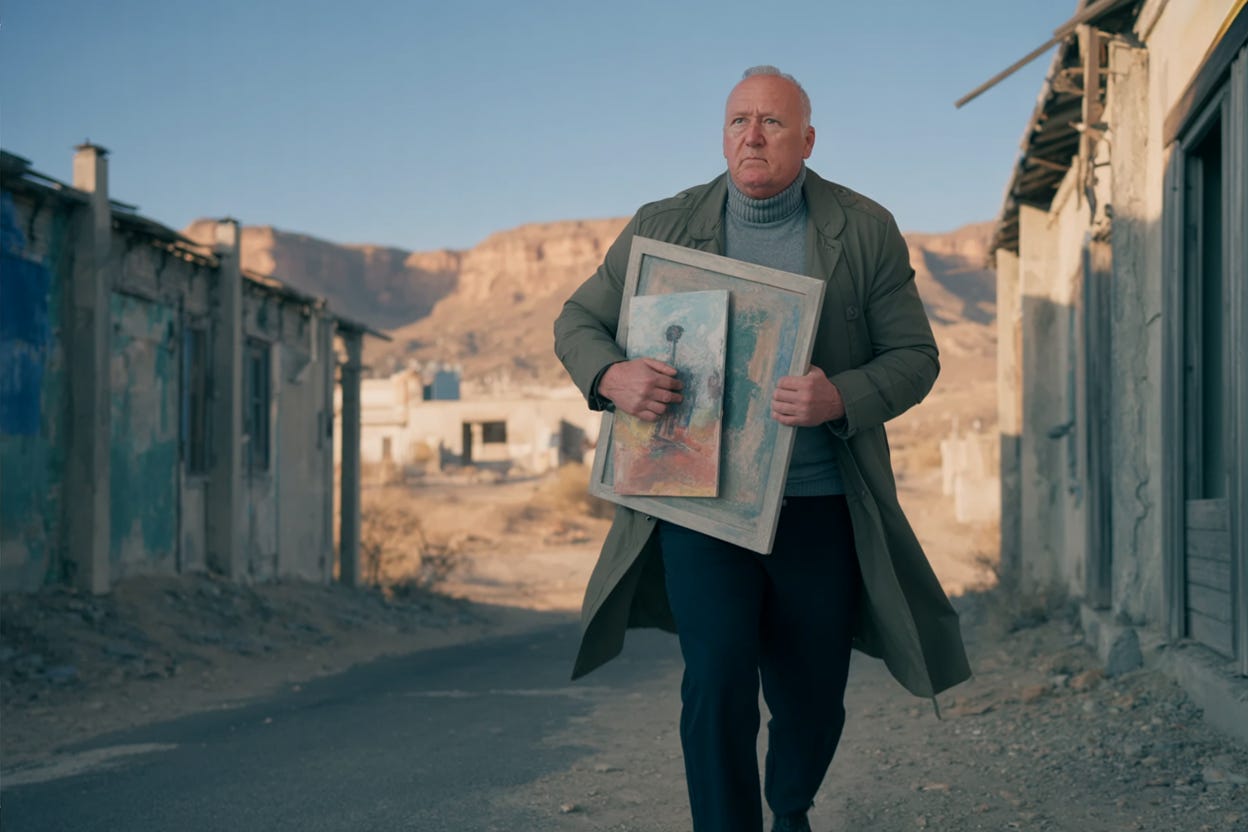
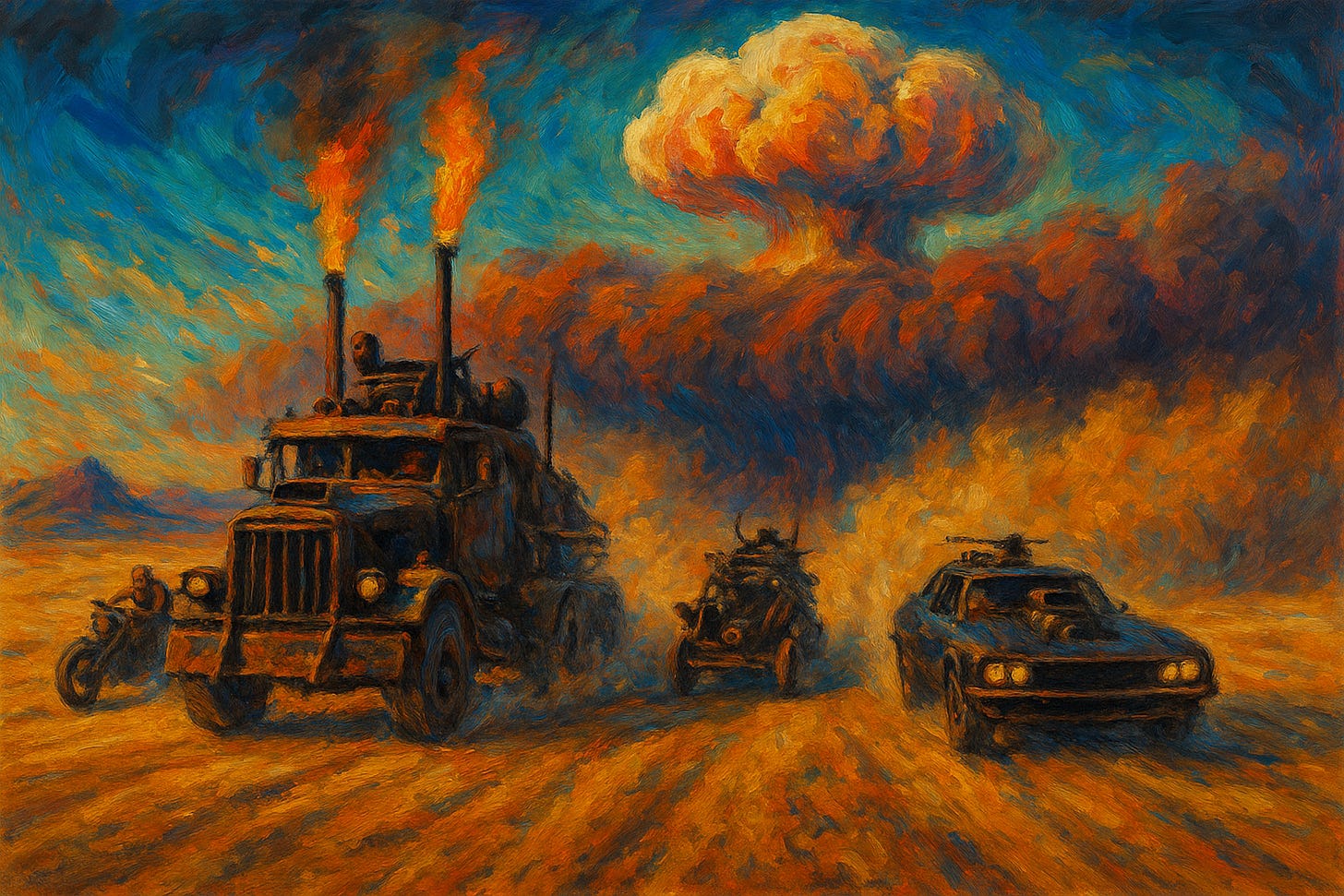
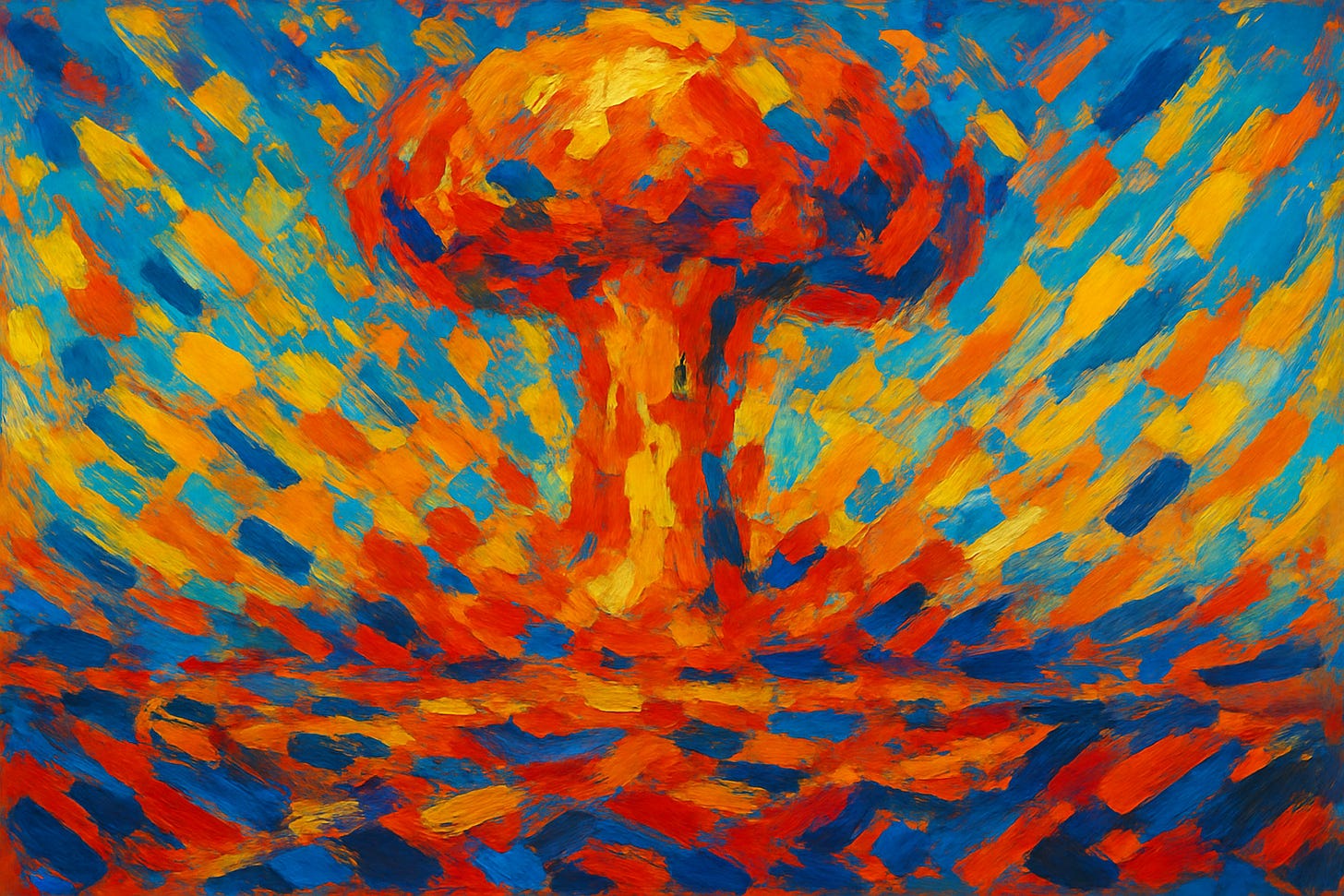
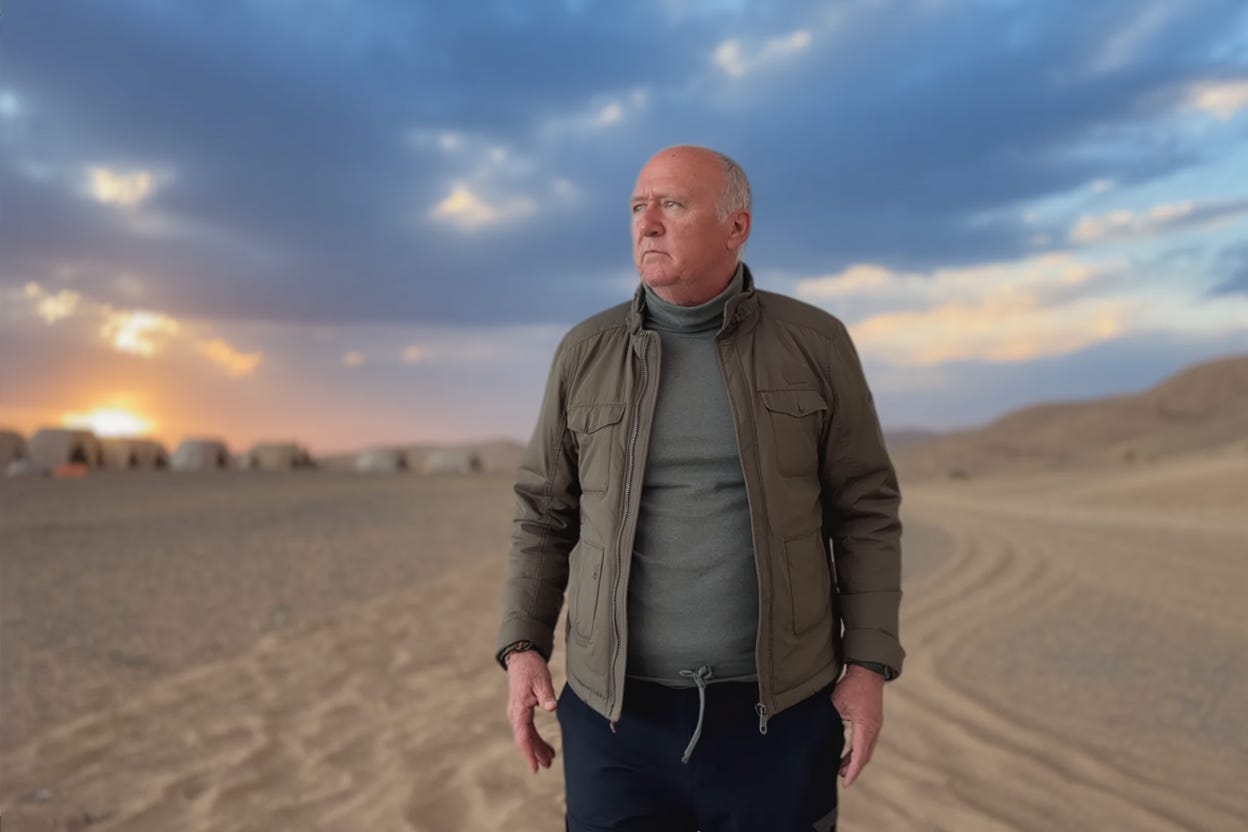

Inspiring as always—Luthen Dune fits the you I know perfectly.